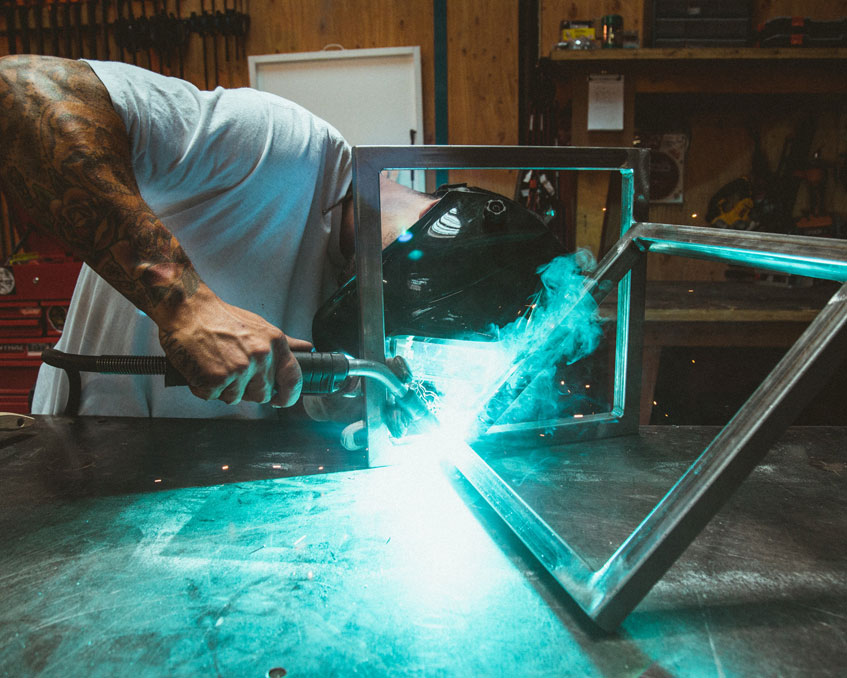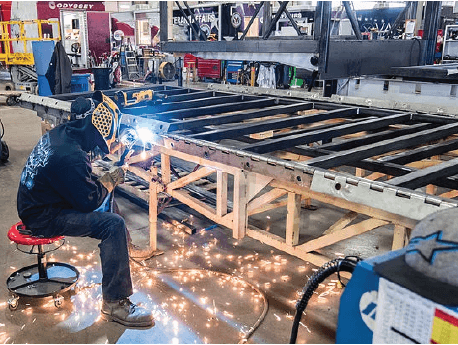All Concerning Welding: Key Insights Into Techniques and Finest Practices for Success
Welding incorporates a selection of techniques, each fit for specific materials and applications. Understanding these techniques, such as GMAW, SMAW, and TIG, is important for attaining optimal outcomes. The best devices and safety and security techniques can not be neglected. As preparation and repairing play crucial duties in the welding procedure, mastering these elements can considerably boost the quality of the end product. What are the key factors that ensure a successful weld?
Comprehending Different Welding Strategies
Welding strategies include a selection of approaches, each suited to particular applications and products. Amongst one of the most usual strategies are Gas Steel Arc Welding (GMAW), Shielded Metal Arc Welding (SMAW), and Tungsten Inert Gas Welding (TIG) GMAW, additionally referred to as MIG welding, is preferred for its rate and flexibility, making it ideal for thin materials. SMAW, or stick welding, is preferred for its simpleness and performance in exterior settings, specifically with thicker steels. TIG welding offers accuracy and control, making it appropriate for detailed job and non-ferrous steels (Belgrade). Each method has its distinct advantages and factors to consider, permitting welders to select the most effective technique based on the task's demands, product type, and wanted results. Understanding these methods is vital for successful welding
Vital Welding Tools and Devices
While different welding techniques call for particular skills, the right equipment and devices are just as necessary for accomplishing quality outcomes. Crucial welding equipment consists of welding devices, which differ depending upon the technique-- such as MIG, TIG, or stick welding. Protective equipment, including aprons, handwear covers, and headgears, warranties security and comfort during the process. In enhancement, clamps and fixtures aid protect products in position, ensuring accuracy in welds. Consumables like welding poles, cord, and protecting gas are likewise essential elements that influence the high quality of the weld. Moreover, devices such as grinders and cutters assist in surface area preparation and post-weld completing, adding to a specialist outcome. Buying high-grade devices inevitably boosts the efficiency and effectiveness of welding projects.
Safety Practices in Welding
Correct security methods are important in the welding sector to secure employees from possible threats. Welders should wear appropriate individual safety equipment (PPE), consisting of helmets with appropriate shading, handwear covers, and flame-resistant clothing. Ample air flow is essential to lower direct exposure to harmful fumes and gases created throughout the welding process. Furthermore, employees ought to be trained in the appropriate handling of welding equipment to stop crashes. Fire precaution, such as keeping combustible materials far from the welding location and having fire extinguishers conveniently offered, are needed. Routine assessments of devices and work spaces can assist identify possible risks prior to they cause accidents. By sticking to these safety techniques, welders can produce a safer working setting and lessen risks connected with their profession.
Readying Materials for Welding
Preparing products for welding is an important action that considerably influences the quality and honesty of the last item (Belgrade Fabrication). Proper preparation involves cleaning up the surfaces to eliminate pollutants such as dust, corrosion, and oil, which can jeopardize the weld. Methods such as grinding, sanding, or utilizing solvents are generally utilized to accomplish a tidy surface area. Furthermore, guaranteeing that the materials mesh comfortably is important; spaces can cause weak welds. It's additionally essential to take into consideration the positioning and positioning of the elements, as this will certainly impact the convenience of welding and the last result. Choosing the appropriate filler material and making sure compatibility with the base steels is necessary for achieving solid, long lasting welds.
Tips for Getting High-Quality Welds
Attaining high-grade welds needs interest to detail and adherence to best techniques throughout the welding process. Appropriate joint preparation is important, guaranteeing surfaces are cost-free and tidy from impurities. Choosing the proper filler material and welding method based on the base steels is crucial for optimal bonding. Preserving consistent travel speed and angle while welding can avoid issues and advertise harmony. Furthermore, managing heat input is important; too much warmth can bring about warping and compromised joints. On a regular basis examining the welds during the procedure allows for instant adjustments if necessary. Employing proper post-weld treatments, such as cleaning and anxiety alleviation, can boost the longevity and stability of the weld, eventually ensuring a successful end result.
Fixing Common Welding Issues
Welding frequently offers difficulties that can impact the top quality and integrity of the end product. Usual concerns such as porosity, inconsistent weld grains, and overheating can emerge, each requiring particular troubleshooting techniques. Comprehending these issues is vital for welders to improve their abilities and achieve perfect results.
Porosity Issues Explained
Although porosity can commonly be forgotten, it continues to be a crucial issue in welding that can endanger the honesty of a completed product. Porosity refers to the existence of tiny gas pockets within the weld grain, which can lead and compromise the joint to premature failing. This problem commonly emerges from contaminants, moisture, or inappropriate securing gas insurance coverage during the welding procedure. To reduce porosity, welders need to confirm that the base products are completely dry and clean, make use of suitable securing gases, and keep constant welding specifications. Consistently checking the equipment and atmosphere can also aid identify possible problems prior to they manifest in the weld. Addressing porosity effectively is vital for attaining strong, durable welds that meet quality criteria.

Inconsistent Weld Beans
Irregular weld beads can considerably impact the quality and stamina of a completed product. Numerous elements add to this issue, including inappropriate traveling rate, wrong amperage setups, and inconsistent electrode angles. When the welder relocates too quickly, a grain might show up slim and lack infiltration, while moving as well slowly can cause too much buildup. Furthermore, making use of the wrong amperage can lead to either damaging or excessive spatter, both of which compromise weld stability. The welder's method, such as irregular torch movement, can likewise result in irregular bead look. To alleviate these problems, welders must focus on keeping steady, regulated motions and guaranteeing appropriate tools settings to achieve harmony in their welds. Consistency is crucial to achieving trustworthy and solid welds.
Getting Too Hot and Bending Issues
Excessive warm throughout the welding procedure can lead to substantial overheating and deforming issues, influencing the architectural stability of the work surface. These troubles frequently materialize as distortion, which can jeopardize positioning and fit-up, making further setting up testing. Elements contributing to overheating include the selection of welding specifications, such as voltage and take a trip speed, as well as the kind of material being welded. To mitigate these problems, welders must preserve constant travel speed and suitable warm input while monitoring the workpiece temperature. Additionally, pre-heating or post-weld heat treatment can aid reduce stresses triggered by fast cooling - Montana Mobile Welding and Repair Belgrade Fabrication. Normal examination and adherence to best methods are vital in stopping getting too hot and making sure the longevity and dependability of bonded frameworks
Frequently Asked Questions
What Are the Career Opportunities in the Welding Market?
The welding sector uses varied job opportunities, consisting of positions as welders, examiners, engineers, and instructors. Professionals can operate in manufacturing, building, aerospace, and automotive fields, taking advantage of strong need and competitive wages in different roles.
Exactly How Can I Boost My Welding Speed Without Compromising High Quality?
To improve welding speed without giving up high quality, one ought to practice effective strategies, preserve equipment, enhance settings, and boost hand-eye coordination. Regular training and seeking comments can additionally significantly add to attaining quicker, premium welds.
What Accreditations Are Offered for Welders?
Numerous accreditations exist for welders, including those from the American Welding Society (AWS), the National Center for Construction Education And Learning and Research (NCCER), and different industry-specific organizations. These credentials improve employability and demonstrate ability efficiency.
Exactly How Does Welding Influence the Properties of Metals?
Welding affects the residential properties of metals by altering their microstructure, which can cause changes in ductility, solidity, and stamina. Warm input and cooling rates during the website procedure considerably influence these material qualities.
Can I Bonded Dissimilar Metals Together?
